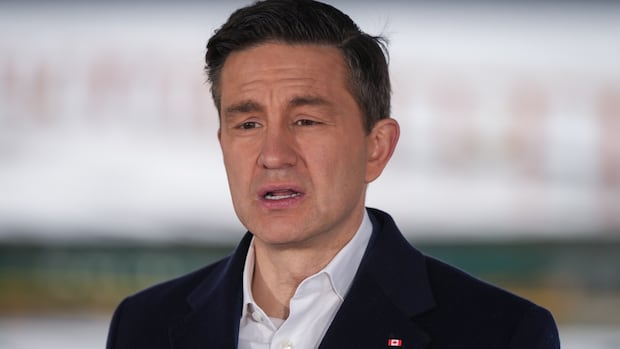Deep Divisions Plague Conservative Party: A Fractured Future?
Editor’s Note: Deep divisions within the Conservative Party have come to a head, raising serious questions about its future direction. This article analyzes the key fault lines and explores the potential consequences.
Why This Matters
The Conservative Party, currently in power, faces unprecedented internal strife. These divisions aren't just about policy disagreements; they represent fundamental clashes of ideology and leadership styles, threatening stability and potentially impacting the UK's political landscape for years to come. This article examines the key factions, their diverging viewpoints, and the implications for the party's electoral prospects and national governance. Understanding these internal struggles is crucial for anyone following UK politics.
Key Takeaways
| Issue | Faction 1 | Faction 2 | Potential Outcome |
|---|---|---|---|
| Economic Policy | Fiscal conservatism, tax cuts | Increased social spending, targeted support | Budgetary deadlock, policy paralysis |
| Social Issues | Traditional values, cautious approach | More progressive stances, social liberalism | Internal conflict, loss of support among core voters |
| Leadership Style | Authoritarian, centralized control | More collaborative, consensus-building approach | Leadership challenges, potential power struggles |
| Brexit | Hard Brexit, minimal EU cooperation | Softer Brexit, closer ties with EU | Renewed tensions, renegotiation of trade deals |
Deep Divisions Plague Conservative Party
The Conservative Party, once perceived as a unified force, is now grappling with deep-seated divisions that threaten to fracture the party and destabilize the government. These divisions are not simply disagreements on policy specifics, but rather fundamental ideological clashes impacting almost every aspect of governance. The current climate reveals a party struggling with its identity in a rapidly changing political landscape.
Key Aspects of the Internal Conflict
The party is currently fractured along several key fault lines:
-
Economic Policy: A significant rift exists between those advocating for fiscal conservatism and significant tax cuts, and those pushing for increased social spending to address cost-of-living pressures and regional inequalities. This conflict is playing out in debates over the budget and government spending priorities.
-
Social Issues: Traditional conservatives clash with a more moderate wing on social issues like LGBTQ+ rights, environmental protection, and immigration. This tension is often reflected in heated debates surrounding legislation and policy pronouncements.
Detailed Analysis: Examining the Fault Lines
The divisions within the Conservative Party are not new, but recent events have exacerbated existing tensions, bringing them to the forefront of national attention. The ongoing cost-of-living crisis has highlighted the gap between the party's economic policies and the needs of ordinary citizens. Similarly, the government's response to social issues has further exposed the ideological fault lines.
Internal Factionalism: The Battle for the Soul of the Party
The Traditionalist Wing
This faction prioritizes fiscal responsibility, lower taxes, and a more cautious approach to social change. They represent a core constituency within the party, but their influence is being challenged by evolving societal attitudes.
The Modernizing Wing
This faction advocates for a more socially progressive agenda, recognizing the need for intervention to address social and economic inequalities. They're seeking to modernize the party's image and appeal to a broader electorate.
People Also Ask (NLP-Friendly Answers)
Q1: What is causing the deep divisions within the Conservative Party?
A: The divisions stem from fundamental disagreements on economic policy, social issues, and leadership style, exacerbated by recent political events and economic pressures.
Q2: Why is this important?
A: These divisions threaten government stability, policy effectiveness, and the party's electoral prospects. They also reflect broader societal shifts and the challenges facing the UK's political system.
Q3: How could these divisions affect the UK?
A: The internal strife could lead to policy paralysis, hinder effective governance, and potentially trigger a general election, impacting economic stability and national policy.
Q4: What are the potential outcomes of these divisions?
A: Possible outcomes include a leadership challenge, significant policy shifts, a decline in electoral support, or even a party split.
Q5: What can be done to address these divisions?
A: Addressing these divisions requires open dialogue, compromise, and a willingness from all factions to find common ground. Leadership needs to foster unity and address the underlying concerns driving the conflict.
Practical Tips for Understanding the Conservative Party's Internal Conflicts
-
Follow reputable news sources: Stay informed through trusted media outlets that provide balanced reporting on UK politics.
-
Analyze party manifestos: Compare the different viewpoints and policy positions put forth by various factions within the party.
-
Engage in respectful political discussions: Participate in informed conversations about the issues, engaging with diverse perspectives.
-
Follow key political figures: Pay attention to the statements and actions of leading figures representing different factions.
-
Understand the historical context: Familiarize yourself with the party's historical trajectory and ideological shifts.
Summary
The Conservative Party faces a critical juncture, grappling with deep-seated divisions that threaten its future. These internal struggles highlight the complexities of navigating a rapidly changing political and social landscape. The consequences of these divisions could be far-reaching, impacting not only the party itself but also the wider political and economic stability of the UK.
Closing Message
The future of the Conservative Party hangs in the balance. Can it bridge these deep divides and present a unified front to the electorate? Or will these internal battles ultimately lead to its downfall? Only time will tell.
Call to Action
Stay informed about these critical developments! Subscribe to our newsletter for regular updates on UK politics and analysis of the Conservative Party's internal struggles. Share this article with others interested in UK political developments.

